A theatre of the absurd is on display in Islamabad with the street-fighters of Imran Khan and Tahirul Qadri breaching the barricades to storm the Parliament and lay siege to the Prime Minister’s House. The denouement of this clear collapse of state authority in the face of a marauding mob is not yet clear. What is clear is that democracy has been grievously damaged, the civilian government has been reduced to a mockery and the political and administrative system has been brought to the verge of a meltdown. The question is no longer about whether or not Nawaz Sharif survives, but of what sort of a caricature he will be reduced to if he survives and what will replace him if he doesn’t survive. Even more important will be the impact of the political implosion underway on the security, stability and economic viability of Pakistan.
To be fair to Nawaz Sharif, neither Imran Khan nor Tahirul Qadri have a real case against him. Nor for that matter do they have a cogent and coherent plan on how to run Pakistan, if indeed they manage to force Nawaz Sharif out of office and take over power. Sloganeering is one thing, fixing a broken down country like Pakistan quite another. Given the brainlessness, belligerence and anarchic demagoguery on display, both Imran Khan and Qadri don’t inspire any confidence whatsoever that they are up to the job. Their main demand for now is to see the back of Nawaz Sharif. Chances are that if they achieve what they want, it will be a pyrrhic victory, one in which they will also be left out in the cold.
The single most dangerous trend that both these people have unleashed is that they have crafted a new template on how to make and break governments in Pakistan. Anyone who can now manage to gather a committed crowd of 10-20 thousand can hold a government hostage and even pull it down by causing chaos and anarchy in the seat of government. What Imran Khan and Qadri have done today, some other political party or even religious party can do tomorrow, making governance by a political government next to impossible. To an extent, this template of political terrorism or mobocracy has been on display in other parts of the world – Egypt (Tehrir Square), Ukraine, Georgia etc. come to mind. Even in India, the AAP tried something similar when they decided to besiege the PM House some months back. The AAP’s antics on Raj Path on the eve of the Republic Day parade were also somewhat similar to what Khan and Qadri have done in Islamabad. But while India’s mature polity snuffed out the AAP’s anarchist approach to politics, Pakistan is being put through a political churning that could easily escalate into a political implosion which at the very least will deal a body blow to the fledgling democracy in that country.
What is most shocking is how things have reached such a pass in just over an year since Nawaz Sharif won a resounding verdict in the 2013 General Elections. Although Imran Khan’s main grouse against Nawaz Sharif is that he stole the election – Khan has deluded himself into believing that he had won the elections – the fact remains that it was by and large a clean election and Nawaz Sharif was always the front runner. In other words, Imran has absolutely no case as far as the elections go. Imran Khan’s screaming and shouting over the elections hasn’t received much traction except among his die-hard supporters. While there is some merit in some of the criticisms (coming from Imran Khan’s foul-mouth, these are more invectives than criticisms) that Imran has made of the Sharif brothers – their style of governance, the rampant nepotism, allegations of deal making on mega projects etc. – there wasn’t anything like a mass upsurge against the Sharifs. In the one year and more that he has been in office, Nawaz Sharif hasn’t exactly worked any miracles in terms of putting the economy back on the rails, ending the crippling power shortages, creating jobs, reining in prices or any of the other tall promises he had made during the election campaign.
Although there was disillusionment with the Nawaz Sharif government, there was no simmering anger waiting to burst that Imran Khan and Qadri have harnessed. It is not as though the scenes being witnessed in Islamabad had been playing out in other cities and towns around the country and it all snowballed into a massive protest in the capital. If anything, except for a few well attended rallies held by Imran Khan in a couple of cities during the build-up to his Azadi march, there were practically no signs of such protest at the mass level. By all accounts then, this is a manufactured protest aimed at putting pressure on Nawaz Sharif to either quit or else accept subordination to the military establishment on issues ranging from defence and security to foreign and economic policy. In other words, the military wanted to restore the dyarchial system in which it called the shots on all matters of state and the civilians were allowed to run municipal functions. Nawaz Sharif, however, was quite ready to play ball and enjoy powers of the chairman of a municipal corporation with the rank of Prime Minister. Imran Khan and Qadri thus became instruments in the hands of the army to fix Nawaz Sharif.
However, as things developed, it wasn’t long before the army too lost control of the plot. It is one thing to manipulate politics through court intrigues and quite a different ball game to manipulate things through street protests. The former can be controlled; the latter have a nasty habit of going out of control because of the sheer number of moving pieces involved. This is precisely what seems to have happened in the current case. Imran Khan and Qadri ratcheted up the rhetoric to a point where they left no wriggle room for themselves to retreat. Backing down from the demand of the resignation of the Sharifs – the other five demands relating to electoral reforms, audit of elections etc. had been conceded – would have meant the end of their politics. Even the army seemed to be unable to make them back off. The grapevine is that when the duo decided to storm the barricades on the night of August 30, they were given a wink and a nod by the military which probably came to the conclusion that the only way they could retain some control over their instruments was by unleashing them.
On its part, the government seemed all at sea on how to handle the protests in Islamabad. Everything it tried – cajoling Imran Khan by initiating the process of electoral reforms, trying to drive a wedge between Khan and Qadri by treating them differently, trying to scare off the protestors by handling control of vital installations in Islamabad to the army, trying to block the path of the protestors resorting to placing of containers all across the province and making preventive arrests, giving in by and by to the demands of both Qadri and Khan – failed. Initially, they used the traditional methods – tax notices, anti-encroachment drives, arrests – to browbeat Qadri into submission. But this backfired when the police resorted to firing to quell a violent mob protesting against an attempt to demolish illegal structures around Qadri’s Lahore HQs. 14 people died and nearly 100 were injured. To compound the disaster, the political government in Punjab washed its hands off the affair and put the blame on the policemen. This demoralised the police, something that proved expensive when the push came to shove in Islamabad. Despite anything between 30-40,000 policemen in Islamabad, a crowd of around 15-25000 was able to overwhelm them! This in itself is an unmitigated disaster and signalled the complete collapse of government authority.
Already on the back-foot because of the Lahore firing, the government forbid the police from using firearms to control the crowd. Part of the reason for this was that the government had come to the conclusion that the only way Khan and Qadri would succeed in their objective of ousting the government was through the cynical exploitation of the politics of dead bodies. In other words, if some 20, 30 or 50 people were killed in police firing, it would cause such a furore that the military would step in, or else there would be widespread revulsion against the government which would make its survival untenable and impossible. This situation the government wished to avoid at all costs. The very fact that the military has been watching the unfolding drama from the side-lines seems to vindicate the government’s thinking. Given the scenes of anarchy and chaos in the heart of Islamabad, it was widely expected that the military could step in. That it didn’t for more than 24 hours could be either because it is waiting for the bodies, or else because the military suddenly realises that it too is caught in a terrible bind and has become a victim of the conspiracy of circumstances which are now beyond anyone’s control. In either case, it means that while the military retains the ability of destabilising a political government, it isn’t very confident about its own power or political capital to displace, replace or take place of a legitimate political government.
With matters reaching a head, there are now no easy answers for any of the players, even less so because constitutionally there is absolutely no way to get rid of Nawaz Sharif unless he himself decides to throw in the towel, something that he has flatly refused so far. Some analysts are of the view that the FIR filed in the Lahore firing case against the Sharif brothers might come in handy to force them out of office. Asides of the fact that merely being named in an FIR doesn’t mean a thing, there is also the issue of the constitutional maintainability of an FIR against a sitting chief minister and Prime Minister for some action he may have taken in the discharge of his duties. If such a precedent was set, then it would make any sort of governance impossible because tomorrow a chief minister or prime minister can be booked for any and every act of any government servant, regardless of whether or not he sanctioned that act.
As things stand, therefore, there are broadly four possible outcomes of the present fracas. The most likely is that the storm will blow over but will have left Nawaz Sharif so weak that he will be reduced to the Mayor of Islamabad and the army will call the shots on all issues of any importance. The second most likely scenario is that the army forces Nawaz Sharif out of office either by mutilating the constitution (the Pakistani genius for this is unlimited) or by violating it. This would however mean that the army will have to run the country directly. It may appoint some proxies (technocrats) for some time and promise fresh elections, but no one can say with certainty when or if these elections will be held because once it takes over, the army will also once again try to clean the Augean stables, a mission which will take a few years at the very minimum.
The third possibility, one which is very slim, almost non-existent, is that Nawaz Sharif survives and instead of becoming weaker actually becomes stronger by taking advantage of the domestic and international complications and compulsions that follow if the military overthrew a legitimate government. In other words, once the limits of how far the military can go against the civilian government are established, Nawaz Sharif could use the space available to recover lost ground. The final possibility is also very slim but also very scary from Pakistan's perspective. The protests could spiral out of control and spread to other parts of the country with all sorts of forces and characters exploiting the situation for their own benefit. This would make the country ungovernable and cause a political implosion that is beyond the control of anyone in Pakistan. This is the doomsday scenario in which Pakistan graduates from a failing to a failed state. Regardless of the scenario that unfolds, one thing is certain. Pakistan is likely to be in the throes of prolonged political instability.
Published Date: 1stSeptember 2014, Image source: http://1.bp.blogspot.com

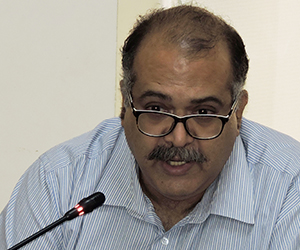
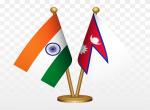
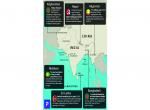
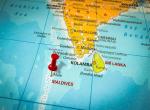


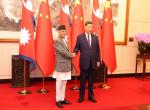
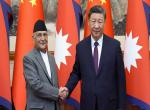
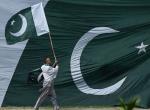
Post new comment